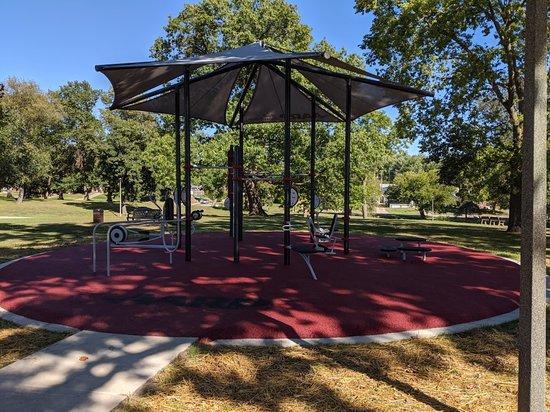
About Lesson
This information is designed to provide a starting point for trainers and program managers who may be new to hosting outdoor fitness classes.
Location
- – Timing – When are people available and interested in participating? How is traffic? Which class times are best: before, during or after school or work?
- – Lighting – Is there enough lighting, natural or otherwise, to keep clients safe? Can we plan the program calendar around daylight savings time?
- – Parking and Restrooms – Is there adequate parking and restroom facilities nearby? Are these restrooms available for use by participants?
- – Visibility – Is the location secluded enough where participants do not feel on display, but visible enough to attract newcomers and create curiosity?
- – Ready – Is the surface of the fitness park free of trash and debris? Before each class, the area should be inspected to ensure a clean and safe working environment.
Liability
- – Are individual permits needed for the instructors?
- – Is insurance handled by the owner of the property, i.e. Parks and Recreation, or does each instructor need their own?
- – Is there a place for participants to safely leave personal items during class? Who is responsible for theft?
- – As a trainer you will be responsible for making sure each individual has registered for the class online and signed a liability release waiver before participating.
Class Design
- – What equipment is available for use?
- – What space around and in the area is available for use?
- – Is the surrounding space clear of obstacles?
- – Will there be a limit on class size?
Operation
- – Is there signage indicating when the public area is in use?
- – Who is responsible for creating and putting up signage?
- – What is the procedure when someone else is using the equipment?
- – What are the policies and procedures of the property owner, ie. Parks and Recreation, for accidents and emergencies?
- – Who is responsible for marketing group programs?
Environmental factors
The ideal instructor is aware of the following when utilizing outdoor public spaces:
- – Music volume
- – Vocal volume
- – Safety of terrain
- – Safety of personal belongings
- – Lighting
- – Personal space
- – Appropriate language
- – Presence of animals
- – Unexpected foot traffic
The photo below depicts how the time of day may affect lighting. This is an example of how simple things, like the shadows cast by the afternoon sun, could make it more visually challenging for some participants. While classes could still be held at this time, a trainer would want to be aware of potential issues and adjust individual instruction appropriately. Outdoor settings may present different challenges to trainers who are used to working in indoor spaces.
